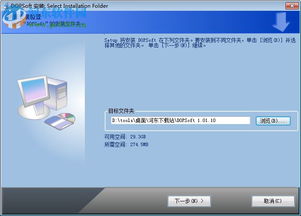Title: Introduction to SWT Interface Programming
What is SWT?

SWT (Standard Widget Toolkit) is a widelyused Java library for creating graphical user interfaces (GUIs). Developed by the Eclipse Foundation, SWT provides a set of components and tools that allow developers to build rich, responsive desktop applications in Java.
Key Features of SWT:
1.
Native Look and Feel:
SWT leverages the native widgets provided by the underlying operating system. This ensures that applications built with SWT have a consistent look and feel across different platforms, such as Windows, macOS, and Linux.
2.
Performance:
SWT is known for its performance and efficiency. By directly interfacing with native code, SWT applications can achieve high performance and responsiveness, even when dealing with complex UI components and large datasets.
3.
Rich Set of Widgets:
SWT offers a comprehensive set of UI widgets, including buttons, labels, text fields, tables, trees, and more. These widgets can be easily customized and arranged to create sophisticated user interfaces.
4.
EventDriven Programming Model:
Like most GUI libraries, SWT follows an eventdriven programming model. Developers can define event handlers to respond to user actions, such as button clicks, mouse movements, and key presses.
5.
Integration with Eclipse IDE:
SWT is tightly integrated with the Eclipse IDE, making it the preferred choice for developing Eclipse plugins and RCP (Rich Client Platform) applications. However, SWT can also be used independently of Eclipse for standalone desktop applications.
Getting Started with SWT:
To start developing SWT applications, you'll need to set up your development environment and familiarize yourself with the SWT API. Here's a basic outline of the steps involved:
1.
Install Eclipse IDE:
If you're planning to develop SWT applications within the Eclipse environment, download and install the Eclipse IDE from the official website.
2.
Create a New SWT Project:
Open Eclipse and create a new Java project. Make sure to include the SWT libraries in your project's build path.
3.
Design the User Interface:
Use SWT's rich set of widgets to design the layout of your application. You can drag and drop widgets onto a graphical editor or define them programmatically in Java code.
4.
Add Event Handlers:
Define event listeners to handle user interactions with the UI components. For example, you can attach a listener to a button to perform a specific action when the button is clicked.
5.
Test and Debug:
Run your SWT application within Eclipse to test its functionality. Use the builtin debugging tools to identify and fix any issues in your code.
6.
Deploy Your Application:
Once your application is ready, you can package it for distribution to end users. Depending on your target platform, you may need to create platformspecific installers or packages.
Best Practices for SWT Development:
Use Layout Managers:
SWT provides several layout managers for arranging UI components within a container. Use layout managers to ensure that your UI remains responsive and adapts well to different screen sizes.
Optimize Performance:
Pay attention to performance optimization techniques, such as lazy loading of UI components and background processing of longrunning tasks. This will help keep your application responsive and userfriendly.
Handle Resources Properly:
SWT applications often deal with system resources, such as fonts, images, and native handles. Make sure to release these resources properly to avoid memory leaks and resource exhaustion.
Follow Platform Guidelines:
Since SWT leverages native widgets, it's important to follow platformspecific UI guidelines to ensure that your application integrates seamlessly with the native environment.
Conclusion:
SWT provides a powerful framework for building crossplatform desktop applications in Java. By leveraging native widgets and offering a rich set of UI components, SWT enables developers to create responsive and visually appealing GUIs. Whether you're developing standalone applications or Eclipse plugins, SWT offers the flexibility and performance you need to deliver highquality software solutions.
文章已关闭评论!
